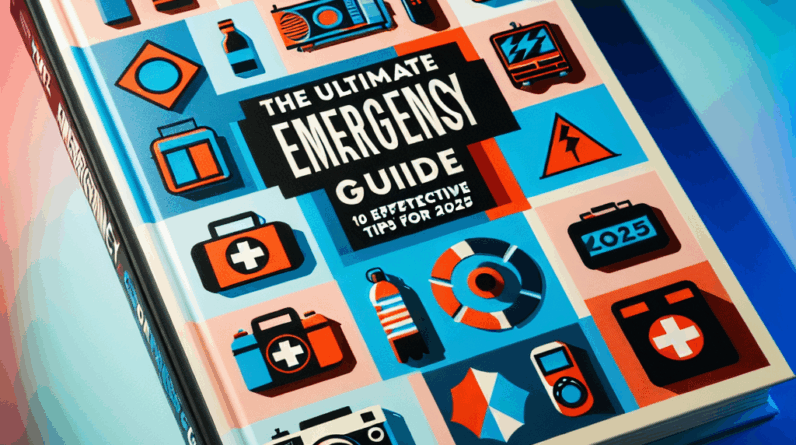Navigating through a pandemic can be daunting, but understanding key safety measures can greatly reduce your risk and ensure you’re protecting not just yourself but also those around you. Here are some indispensable tips to keep in mind during such challenging times.
Understanding the Importance of Distance
Physical distancing should be a top priority during a pandemic. By maintaining a minimum distance of six feet from others, you essentially create a protective barrier around yourself. This practice is not only about avoiding direct contact with those who are visibly ill but also minimizes your interaction with asymptomatic individuals who might unknowingly spread the virus. Remember, every step back in a public setting is a step forward in pandemic safety.
The transmission of viruses, particularly through respiratory droplets when talking, sneezing, or coughing, is significantly reduced with physical distancing. It might feel awkward at first, like when you’re the only one stepping back in a grocery queue, but the peace of mind it brings is well worth it.
Creating a Safety Zone at Work
For many of us, the workplace is where we spend a large chunk of our day. Ensuring it’s a safe space is crucial. Start by verifying that your workplace adheres to physical distancing protocols. If it doesn’t, don’t hesitate to discuss potential safety improvements with management.
Businesses have adopted innovative measures such as installing plastic barriers, modifying shifts to reduce overlap, and promoting remote work to enhance safety. Simple actions like timing your breaks to avoid crowded spaces can also contribute significantly to your well-being.
Regular reminders and signs about maintaining distance can serve as effective prompts for keeping safety at the forefront of everyone’s mind in the workplace.
Socializing Safely
Pandemics don’t have to spell the end of social interactions, but they do require us to modify how we engage with others. Opt for outdoor gatherings where the air circulation is better, and you can maintain distance without feeling confined.
The rise of virtual platforms has revolutionized how we connect during these times. From digital game nights to video coffee chats, technology offers a myriad of options to stay in touch while keeping physically apart. Planning activities that allow for ample space can make maintaining social connections both safe and enjoyable.
The Basics of Handwashing
Handwashing might seem trivial, but its importance can’t be overstressed during a pandemic. Engaging in a thorough handwashing routine—singing ‘Happy Birthday’ twice to ensure you’re taking your time—is a simple yet effective defense against the spread of pathogens.
Soap and water are your best allies in this fight, but when these aren’t available, hand sanitizer with at least 60% alcohol is a good substitute. Remember, consistency is key; wash your hands frequently, especially after touching public surfaces, before eating, and after you get home.
Disinfecting Surfaces
Keeping frequently touched surfaces clean is a critical practice. Make it a habit to wipe down items like doorknobs, light switches, and your phone daily. Keeping disinfectant wipes near entryways ensures you can clean these items as soon as you enter from outside, actively reducing the risk of bringing germs into your home.
End your day by disinfecting your workspace, taking personal responsibility for your area’s cleanliness. This not only protects you but also ensures a safer environment for everyone around you.
Avoiding Touchpoints
Minimize your contact with commonly touched surfaces in public areas. Opt for stairs instead of elevators, use contactless payments, and choose self-checkout at stores whenever possible. These practices help you avoid unnecessary direct contact and keep your exposure to shared surfaces to a minimum.
Adapting your daily routines in these small ways can significantly decrease your risk and streamline your interactions in public spaces during a pandemic.
Following Trusted Sources
Stay informed by following updates from credible organizations like the World Health Organization (WHO) and the Centers for Disease Control and Prevention (CDC). These bodies provide reliable information that can help you make informed decisions about your safety.
Avoid misinformation by sticking to reputable news sources and official health advisories. Keeping yourself well-informed helps you navigate the flood of information and focus on facts relevant to your safety and health.
Understanding Local Regulations
Pandemic responses vary by location, so it’s important to stay aware of the specific guidelines and restrictions in your area. Local health departments provide tailored information that can help you adhere to the best practices recommended for your community.
Being aware of and compliant with local guidelines not only protects you but also shows solidarity and respect for your community’s efforts to combat the pandemic.
Listening to Healthcare Professionals
When in doubt, turn to the experts. Healthcare professionals can offer guidance and clarity on how to manage your health during a pandemic. If you’re feeling unwell, consulting with them can provide you with the necessary steps to take, whether it’s getting tested or following specific health protocols.
Utilizing telemedicine options for consultations can be particularly effective, allowing you to seek advice without leaving your home. This keeps you and healthcare providers safe, while ensuring you receive timely medical attention.
Recognizing Symptoms
Be vigilant about monitoring your health and be aware of the symptoms associated with the virus at large. Early detection of symptoms like fever, cough, or fatigue can lead to quicker intervention and a potentially milder illness course.
If you notice symptoms, take immediate action by consulting a healthcare provider. Proactive measures can significantly alter the impact of the virus on your health.
Tracking Health Changes
Keeping a health diary can be an insightful practice during a pandemic. Record daily symptoms, mood changes, and any other health-related observations. This can help you recognize patterns or shifts in your health that may need medical attention.
Such tracking can be empowering and reassuring, giving you a clearer picture of your health and enabling proactive management of your well-being.
Quarantining When Necessary
If you find out you have been exposed to the virus, do not hesitate to quarantine. This is a key step in preventing the spread of the virus to others and contributes to the broader efforts of your community to manage the pandemic.
During quarantine, keep yourself occupied and connected through digital means. Engaging in enjoyable activities and maintaining social interactions online can help mitigate the emotional and mental challenges of isolation.
The Importance of Self-Care
Prioritize your mental and emotional well-being by engaging in self-care practices. Activities like meditation, yoga, or simply enjoying a good book can significantly impact your stress levels and overall mental health.
Setting limits on your exposure to news and social media can also help preserve your mental space, allowing you to focus on your well-being and maintain a balanced perspective during these challenging times.
Connecting with Others
Maintain connections with friends and family through various communication methods. Whether it’s a text message, a video call, or even writing letters, staying in touch is crucial for mental health.
Sharing your experiences and emotions with others can be incredibly supportive, helping you feel less isolated and more understood during times of uncertainty.
Seeking Professional Help
There’s no stigma in seeking help from a mental health professional if you’re feeling overwhelmed. Online therapy offers a flexible and accessible option to connect with therapists, providing support without the need for physical travel.
Embracing mental health support is a strength, ensuring you have the necessary resources to navigate the pandemic more effectively.
FAQ
1. What is physical distancing and why is it important during a pandemic?
Physical distancing involves keeping a safe space between yourself and others to minimize the spread of viruses. This practice is crucial during a pandemic to reduce direct and indirect transmission of the virus, particularly from asymptomatic carriers.
2. How often should I wash my hands?
You should wash your hands multiple times a day, especially after being in a public place, before eating, and after using the bathroom. Effective handwashing involves scrubbing your hands with soap and water for at least 20 seconds to ensure you’ve thoroughly cleaned them.
3. How do I stay updated on local pandemic guidelines?
Stay informed about your local health guidelines by following your health department’s social media, subscribing to their newsletters, or checking their website regularly. This will keep you up-to-date on the latest safety measures and advisories relevant to your area.
4. How can I support my mental health during a pandemic?
Support your mental health by practicing regular self-care, staying connected with friends and family, and seeking professional help if needed. Managing your media consumption can also play a significant role in maintaining mental well-being.
5. What should I do if I experience symptoms of illness?
If you exhibit symptoms like fever, cough, or unusual fatigue, contact a healthcare provider promptly for guidance. They can advise you on whether you should get tested and the best practices for managing your symptoms and preventing further spread of the illness.




